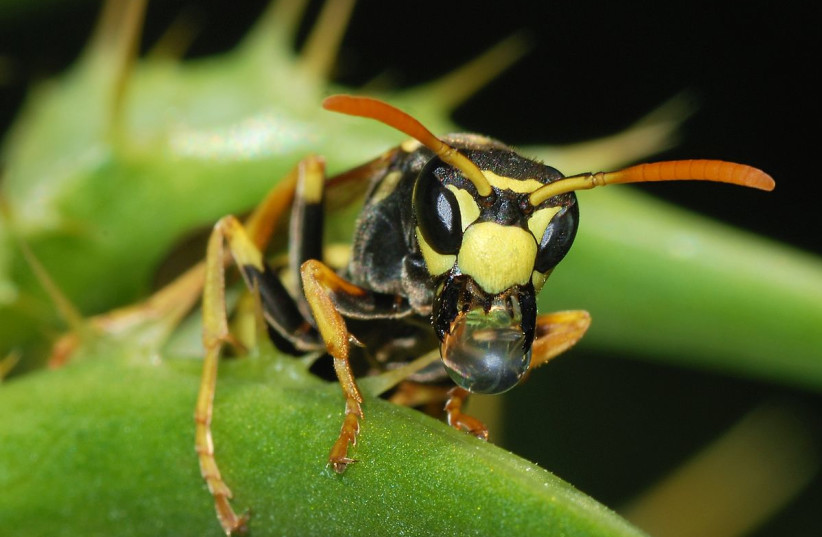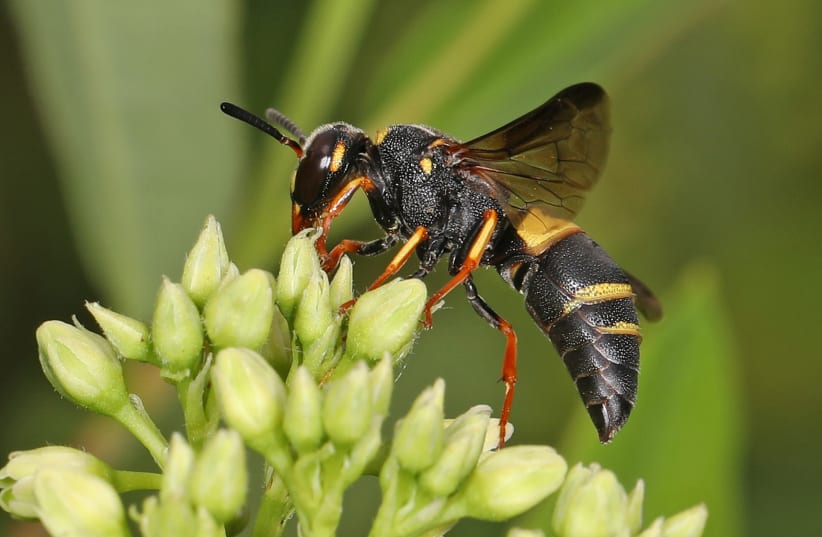Certain male wasps have a unique weapon at their disposal to fend off predators: Thrusting their genitals at them, according to a new study.
Published in the peer-reviewed academic journal Current Biology, the study sheds light on how prey animals can adapt to defend themselves from predators, particularly if they lack typical defenses.
The study was led by researchers from Kobe University's Graduate School of Agricultural Science.
Wasp penises: An unlikely weapon of defense for otherwise helpless insects
When one thinks of wasps, they are typically imagined in the same vein as bees. In other words, they are flying insects that reside in hives, have a hive societal structure and are equipped with extremely painful stingers that they will use against animals of all sizes should they feel the need to do so. The latter can terrifyingly manifest in the form of the bees or wasps swarming a hapless victim in a vicious cloud of buzzing and stingers.
These stingers can be incredibly painful and posses venom that could cause severe allergic reactions in humans as well.


Wasps in particular are often thought of as more aggressive and painful than the humble bee. Despite this, they generally only sting humans as a means of defense, as is also the case with other predators.
However, that doesn't mean all wasps pose this danger. In fact, only female wasps actually have stingers. This is because the stingers themselves are ovipositors, which are also used to lay eggs - something male wasps don't do.
As a result, male wasps are considered harmless.
This is why it was so shocking when one of the lead researchers was seemingly stung by a male mason wasp (Anterhynchium gibbifrons).
How could this be? Male wasps don't have stingers, after all, so was this a form of mutation? Are wasps evolving before our eyes?
No, the actual answer was that this wasn't a stinger - it was a penis.
To prove it wasn't a one-off occurrence, the researchers conducted tests by placing male mason wasps with predators, specifically the tree frog Dryophytes japonica and the pond frog Pelophylax nigromaculatus.
Regarding the pond frogs, they simply just ate all of the wasps. The tree frogs, however, were far more hesitant, rejecting the potential meal option over a third of the time.
In some cases, though, the tree frogs were housed with male mason wasps that had their gentialia severed. In those cases, the frogs showed no such hesitation and ate them all.
In cases where the wasps' genitalia was kept intact, researchers could see the male wasps attempt to sting the predators with their penises, trying to keep the frogs at bay.
So why is this happening?
Careful analysis shows that mason wasp penises are not your ordinary male genitalia. Rather, they come equipped with two spikes on their genitals.
These spikes don't contain venom like stingers do. However, they are still sharp and can hurt.
Now, the fact that a penis would have spikes isn't too unusual in and of itself. There are many animals in the world that have something similar, after all. Generally, the reason for this is that it aids in the mating process.
But that isn't the case here. The researchers studied wasp mating habits and saw that the male wasps never used their spikes in mating. Rather, they seem to only be used for defense.
This is something that has never been seen before in any animal whatsoever.
However, there is some precedence for using male genitalia for defensive or counteroffensive purposes. For example, some male hawkmoths use their genitals to create ultrasound, which serves to jam the sonar of bats.
And what makes this more interesting is that there are a whole host of wasps that also have spikes like these on their genitals.
Still, though, how do these spikes match up against stingers?
To figure that out, the researchers also ran the same test again, but this time put female mason wasps with frogs.
Like last time, the pond frogs ate all the wasps - evidently, they are just much more resistant to stinging.
The tree frogs, however, refrained from eating over half of the female wasps.
Regardless, the study is still groundbreaking, and it can pave the way for further study into the possible weaponization of male genitalia for defensive purposes in the animal kingdom.
